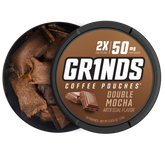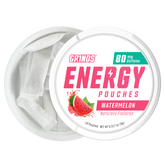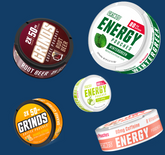Battle of the Beverages (Part One): Caffeine Content & Regulation
Caffeine is mostly consumed by drinking beverages. The majority of all caffeine consumption comes in the form of four types of drinks: coffee, tea, soda and energy drinks.
You may be wondering if one type of caffeinated beverage is better or worse for you than the others, or simply thinking about how to get energy without energy drinks. Like most things in life, it depends on what you’re trying to achieve or avoid with your beverage choices.
When deciding which type of caffeinated beverage is best, we think it’s best to consider a couple of different factors. In this article, we’ll look at caffeine levels and the ability to regulate caffeine with these different types of drinks. In next week’s post, we’ll consider calories and price.
Caffeine Content
The magic number to remember is 400 mg, which is the maximum daily allowance for safe caffeine consumption. What does that look like in terms of coffee, tea, soda and energy drinks?
- 2 shots of 5 Hour Energy
- 2.5 cups (8 oz each) of coffee
- 2.5 cans (16 oz each) of Monster Energy
- 9.5 cups (8 oz each) of black tea
- 11 cans (12 oz each) of Coke
- 12 or 13 Grinds Coffee Pouches
- 6 or 7 Grinds Coffee Pouches 2X Caffeine
(Don’t see your preferred beverage listed here? Check this database from Caffeine Informer.)
If you’re concerned about what caffeine does to your body and are trying to lower your intake, you would be best served by steering clear of energy shots, brewed coffee and energy drinks. Black tea, cola and Grinds Coffee Pouches (even a couple at a time) are much better alternatives.
Caffeine Regulation
While 400 mg is the maximum daily allowance for safe caffeine consumption, you’re likely to experience a caffeine crash when you intake 200 mg or more at a time. That means a certain amount of regulation is needed to avoid the crash.
The most obvious way to regulate caffeine consumption is simply to lower the amount of caffeine you consume at one time. Generally speaking, that could just mean drinking less of your chosen beverage. For coffee drinkers, that could also mean switching to decaf. For tea drinkers, it could mean switching to green tea or herbal tea. For cola drinkers, many caffeine-free soft drinks are available.
It’s not so easy with energy drinks, however. By default, they are almost always very high in caffeine content, so drinking less is still going to leave you buzzing with energy drink jitters.
The other way to regulate your caffeine levels is to spread consumption throughout your day. If you usually drink two cups of coffee in the morning, try having one in the morning and one after lunch. The same applies for tea and soda.
Energy drinks again present a problem, by default, because they generally only come in one size - usually in 12 or 16 ounces. It’s also harder to save half for later, because the carbonated beverage won’t taste as good after being opened for several hours. In other words, energy drinks make it difficult to regulate consumption; cracking one open means you’re bound to consume a whole lot of liquid with a whole lot of caffeine - there’s just no way around it.
The good news is Grinds Coffee Pouches provide a great alternative to coffee, tea, soda and energy drinks because they make caffeine regulation a cinch. One pouch = just 25 or 30 mg (50 or 60 mg for our 2X caffeine versions), so it’s safe to consume them several times over the course of your day. Even better, the can of coffee pouches won’t spoil or go flat like an opened can of energy drink, so there’s no pressure to consume them all in one sitting… or day… or week!
Two additional factors are usually at play when trying to decide which type of caffeinated beverage is best for you: calories and price. We’ll break those down in our next post in this two-part “Battle of the Beverages” series.






